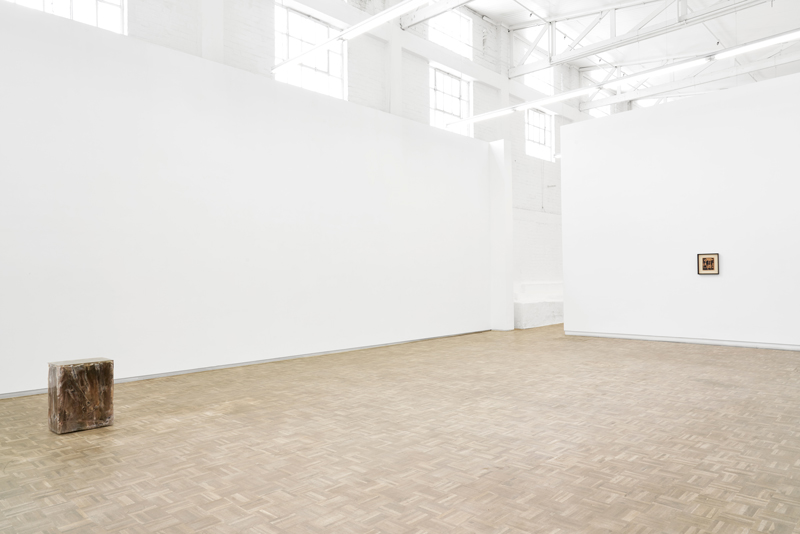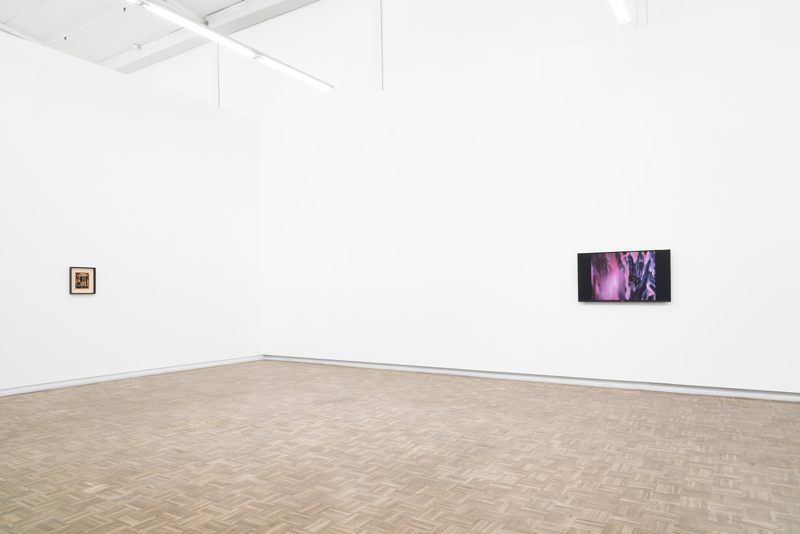







how do you arrive at a place when your image arrives before you? brings together three works - a sculpture by Kevin Beasley (Untitled, 2020), a video by Dineo Seshee Bopape (a love supreme, 2006) and a collage by Gerard Sekoto (Abstract with figures, 1966).
Engaging these diverse and unusual works in conversation, how do you arrive at a place when your image arrives before you? speaks through and about layers of concealment and revealment. This is most clearly expressed through the interplay of translucency and opacity present in the works, each of which reveal moments of perceivable, figurative detail - a mouth, here, a hand, there - that shift in and out of focus as we encounter them.
Encased in a resin block, Beasley’s recent assemblage of ‘African’ ‘tribal’ figurines subtly reframes the hand-carved objects out of their context of imitation and mass production into a compound object not easily read. The shimmering translucency of the sculpture’s outer layers belie its inner density; in spite of appearances, we cannot access the centre. Representative of a population caught in suspension, it’s unclear whether the figures are being preserved or suffocated in their containment.
In Bopape’s eponymous video, John Coltrane’s seminal 1964 recording of ‘A Love Supreme’ plays in the background as the artist licks chocolate from a pane of glass, slowly replacing it with her own image. Through this sensual yet laborious process of unmasking, Bopape is consciously countering the erasure of the lives and work of Black women. Since the colour of chocolate parallels the colour of her skin, it’s as if she’s consuming herself, uncovering the actual self behind what is visible at first glance.
Sekoto’s lesser-known work on paper, Abstract with figures, was produced in 1966, two years after Coltrane’s musical breakthrough, when the artist-musician had already been in exile for some years. It’s unclear whether the work was produced in his new home of Paris, or Senegal, where he spent a year at the invitation of the country’s first president, Leopold Senghor. What is significant about the work here, however, is the artist’s sophisticated approach to the relatively simple medium of collage. As the title and composition suggests, the work is poised midway between abstraction and figuration, with some evidence of this decision found among the work’s layers of card and glue. Just as Sekoto rejected limitations imposed on him by an oppressive and unjust system, through the collage he is again rejecting the distinction between abstraction and figuration, choosing rather to encircle one with the other.
The show presents a set of possibilities in thinking through encodings within an image; the image concealed, the image revealed and the image contradicting itself. Read at a deeper level, the works on show articulate the journey of the image and its very constitution through layers; layers of colour, form, history and time. Taken apart, each artwork compels its own arc, but placed together under the lens of this exhibition, time and place is collapsed and brought into an alignment that reveals new aspects to each work.